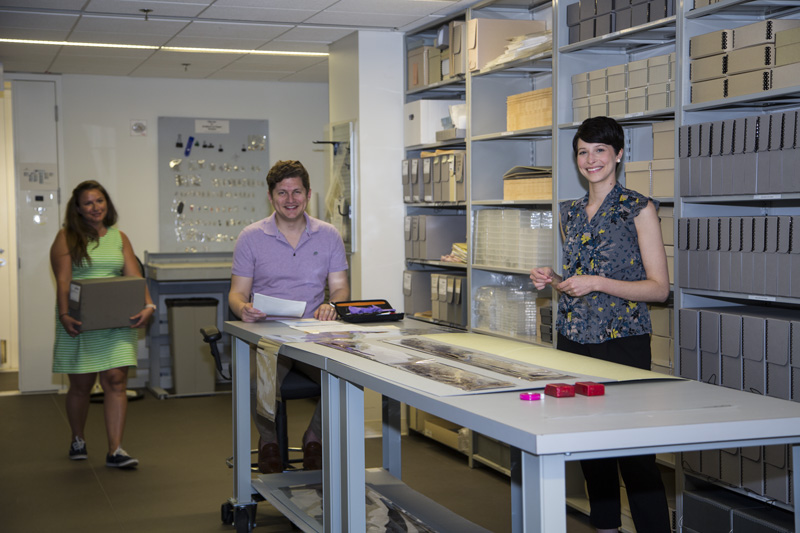
The Smithsonian Institution Archives cares for many different materials, from paper documents and photographs, to audio and video recordings and film. In addition, born digital holdings such as email, websites, social media, and other items such as exhibit CAD drawings can also be found in our collections (see more at Digital Curation). Both analog and digital holdings require preservation strategies for stabilization and for access to their original form for as long as possible. Every staff member at the Archives takes responsibility for the preservation of collections, but the Preservation Team creates and implements policies and standards for the care of our physical collections.
Preservation at the Archives seeks to prolong the life expectancy of our collections through activities that directly address known agents of deterioration; physical force, theft and vandalism, fire, water, pests, pollutants, light, incorrect temperature and relative humidity, and custodial neglect. The Archives has developed a holistic approach to caring for our collections by following six preservation principles as outlined below.
- Preservation Management: Evaluating risks, conducting assessments, and developing policies to create and maintain a long-term preservation plan.
- Environment: Selecting and maintaining an appropriate and sustainable climate that prolongs the lifespan of collections.
- Storage and Handling: Utilizing best practices for storage enclosures that reduce handling and stabilize deteriorated materials in order to facilitate access to researchers.
- Reformatting: Creating duplicate copies of collections, for both preservation and access, to balance providing access to content while ensuring stability of original collections.
- Emergency Preparedness: Planning for potential emergency situations that could pose risks to collection safety.
- Conservation: Examining, documenting, researching, and treating objects to improve the long-term stability of collections.
